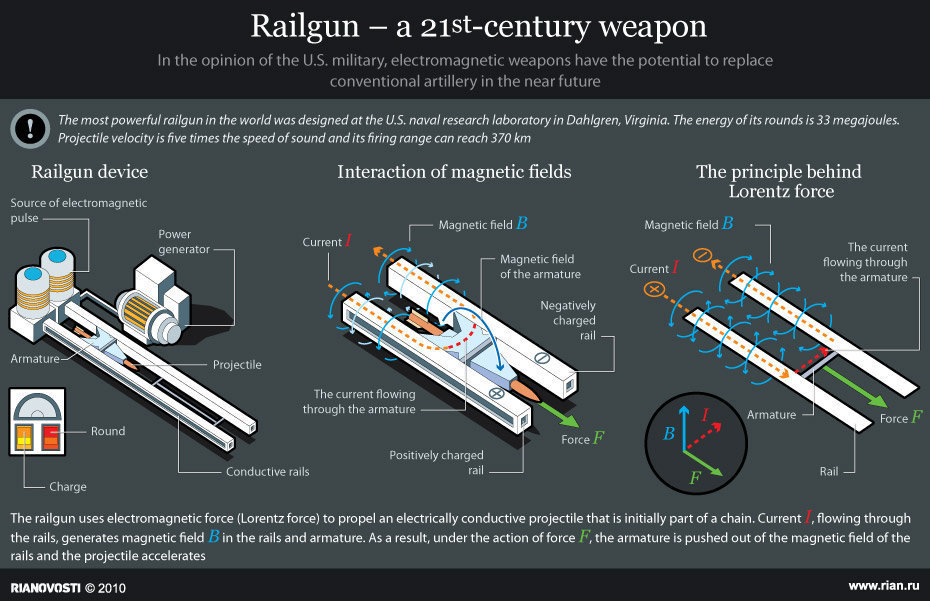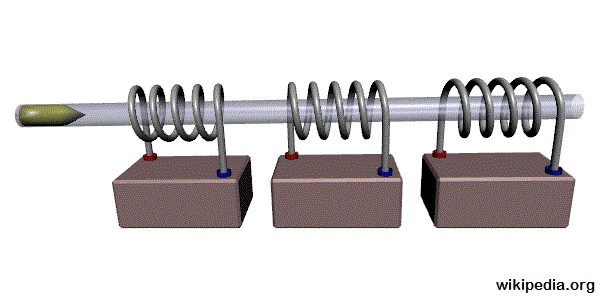If you only think about magnets as the things that keep your shopping list stuck to the fridge, then you are missing out on dozens of ways to use them. Both before and after a major crisis, you will be amazed at how much you will need them.
Have a look at this list of applications so that you can see where not having a robust supply of magnets in your stockpile can cause more problems than you anticipated.
Speakers and Radio Receivers
No matter whether you use a foxhole radio or build something a bit more robust, the system will be useless without some kind of receiver that translates the radio frequency back into sounds. Just about every speaker and receiver on modern communication devices rely on magnets.
If you cannot scavenge speaker parts, but you have a few magnets on hand, then you can still build a receiver with relative ease.
For example, this receiver is made of little more than paper, copper coil, and a magnet. It will work as well with a crystal radio as more complex designs that may be in your stockpile. In fact,if you need to replace a speaker/receiver for a phone, CD Player, DVD player, or just about any other device, you can use these crude speakers to gain access to the sounds made by the device.
Video first seen on Plusea.
Generating Electricity
Of all the uses for magnets, this is truly my personal favorite. All electricity generating systems come down to finding ways to get a magnet to cause current to flow in a nearby wire (coil).
Today, most systems set the magnet in the center of a complex, tightly wound coil to form a motor. Motors can be used to generate force to turn other objects, or they can be used to generate electricity. Depending on how the motor is designed, it may or may not be possible to use the motor for both purposes.
When it comes to generating power in a situation where “low tech” requires simple tools and low skill levels, it is my personal belief that it is better to find ways to get the magnet to spin while keeping the coils stationary. Even though less power may be generated using this method, the coils are far less complicated and can easily be wound by hand if needed. That being said, if you don’t believe this, try opening up even a simple 1 – 2 volt DC motor.
Pay careful attention to the coil wound to fit around the main shaft. Feel free to unwind it, and then see if you can rewind it exactly as you found it before. In just about every case, you will find this task impossible to achieve. Winding a coil is not like winding up a ball of yarn. Wire tends to be much stiffer, and it also can be much harder to line up without good quality motor winding tools. You will also need fresh wire on spools made specifically for winding coils.
From personal experience, and more than a few adventures with shorting motors and other assorted mischief, I can safely say that you should not, as a prepper, rely on anything that you can’t replace from scratch.
While there may be people that have the tools and materials available to build more complex coils, others are best served by using simpler methods that still get the job done. When it comes to generating electricity, you will find it easier to develop systems in which the magnets move and then you can replace simpler, DIY winder/hand wound stationary coils as needed.
Convert any Motor and Speaker into a Generator
Remember all those old motors you have laying around that you’ve been told can’t be used to generate electricity? Were you told that it would cost more to “convert” these motors than it was worth? This video reveals an incredibly easy way to attach a magnet to the shaft of a motor so that it can be used to generate electricity.
In this video, the magnet is placed near a speaker so that the vibrations from the speaker generate power. You can use this or other means to generate power. Just make sure that you are able to generate more power than what is consumed by the motor.
Video first seen on Giesbert Nijhuis.
Clean Algae from Hydroponics Aquariums
If you have any kind of aquarium, then you also know that algae is going to form and cause all kinds of problems. While you may be able to use a simple sponge to remove algae from smaller tanks, that is not going to be an option for bigger tanks that have areas that are hard to reach. In the meantime, during a crisis, any chemicals that you may be using to control algae will also be unavailable.
You can get rid of algae easily enough by placing one part of an aquarium safe magnet inside the aquarium. Next, use the other half to move the magnet around from outside the tank. As the magnet moves, it will also take the algae along with it. This option will release algae into the water, where it will be picked up by the filters. Just change the filter media in a few days and you will have solved your current algae problem.
Extend the Life of Your Hot Water Heater
Did you know that corrosion is the single greatest enemy of your hot water heater? Contrary to popular belief, it is not the water itself that causes the corrosion. Rather, it is calcium dissolved into the water that causes the corrosion.
Before producing scale on the inside of the heater, calcium will either form carbonate or aragonite. Even though calcium is not magnetic, strong magnetic fields do have an impact on it. In this case, as the calcium and water pass through a magnetic field, it will form aragonite instead of carbonate. Aragonite will either form no bond or a much weaker bond than carbonate on the inside of the water heater.
To take advantage of this effects, make sure that you have copper pipe going into the hot water heater. Place two neodymium magnets on the outside of the pipe and leave them there. When placing the magnets, make sure they do not interfere with the internal electronic workings of the heater.
The whole arena of magnetic treatment of water remains a controversial topic. Nevertheless, there has been some research done on reducing scale buildup inside hot water heaters. At the very least, adding two magnets won’t harm the heater, and might just do some good.
Extend the Life of an Engine
No matter whether you have a tractor or some other kind of farm equipment, the engines will wear out even if you have good oil and filters on hand.
Some of this wear can be reduced if you are able to keep metal bits from the piston and engine block from getting past the filter and back into the oil. Since many of these bits are magnetic, you can try placing a ceramic magnet in the oil pan.
As the oil flows into the pan, the metallic bits will be attracted to the magnet and trapped by it. When you change the oil, make sure that you clean the magnet before replacing it.
Close off Heating and Cooling Registers
Have you ever been in a situation where you had to close off parts of the house because you didn’t have enough resources to keep all the rooms warm or cool enough?
If you have central heating or any other system that relies on vents, your efforts to close off unused rooms will be of little use because the vents won’t completely close. You can use tinfoil or any other flexible, fireproof material to cover the registers , and then use the magnets to hold the material in place.
Why wait for a bad weather situation to use magnets this way? You can cut back on your heating and cooling bills right now just by finding a better way to close central heating registers in rooms that you aren’t using.
Cold Weapons
Some of the most interesting, and deadly weapons for defense can be made with magnets. There are three basic kinds to consider. If you have enough magnets and power, these devices can also be used for perimeter defense.
Railguns
These devices require two rails, a source of power, and, in the original versions, a projectile that conducts electricity. The projectile serves to close the circuit between the rails and the power supply.
Once the projectile reaches the end of the rails, it is going so fast that it will continue on its path without using more energy from the power source. There are also newer designs that do not require a projectile. Newer rail guns being developed by the military can use pure energy as the “projectile”. Typically, these guns fire as much as 33% faster than conventional explosive based guns.
Coilguns
Instead of using rails, coilguns are little more than a series of coils that are energized in a sequence that causes magnetic ammunition to move forward at great speeds. This sequence may also include inducing current in such a way that the bullet also rotates in the barrel without the use of rifling.
When compared to railguns, coilguns are much easier to make. You can build a hand held version from magnets, wire, and a few capacitors.
Directed Energy Weapons
Instead of firing a projectile, these devices are designed to emit large amounts of energy at a specific target. Usually, the energy will disrupt or destroy electronic circuits or cause some other kind of damage.
Even though many of the more robust applications are beyond the average prepper, there are others that you may be able to build for the purpose of jamming radar or any number of weapons that use unshielded electronics. If you do decide to try and build magnet based weapons, make sure that you also know how direct energy weapons may be used to neutralize them.
In some cases, you may find that a few simple adjustments to the shielding will be enough to ensure your weapons continue working regardless of the kind of energy beam aimed at them. Other times, you may need to go back to more simple designs that eliminate integrated circuits and other vulnerable technologies.
Find True North Without a Compass
These days, just about everyone uses a GPS and a smart phone with a map app to find out how to get from Point A to Point B. In fact, even if you go camping, hiking, or off the beaten path, you may use a GPS for navigational purposes. No matter how many times you read about adding a compass to your bug out bag, chances are you haven’t gotten around to buying one. Worse yet, you may have settled for a cheap compass that doesn’t even work properly.
Let’s say a major disaster happens and you don’t have an hour or so to chart the position of the sun in order to figure out where North is. If you don’t have a compass, but you do have a magnet, you can make a crude compass with it. Just take a straight pin or a sewing needle and rub it across the magnet around 50 times. Make sure that you always rub the needle across the magnet in the same direction.
Next, push the needle or pin through something that will float easily in water. A cork, or any other buoyant item will work perfectly. Set the needle and the cork in a bowl of water so that the needle lays flat on the surface. The needle will point to true north as long as there are not other large metallic objects in the area to throw it off. As with any other compass, you must be careful about where you take your readings so that you do not wind up going astray.
Locate Magnetic Objects Hidden in Walls
As simple as this one may sound, it is also one of the most versatile ways to use magnets. If you are trying to locate studs, chances are they were nailed into place with nails that will respond to the presence of a magnet.
Why spend all that money on a stud finder when a magnet can just as easily do the job? Aside from that, anything magnetic in the walls will also cause the magnet to be attracted to it. This is a good way to locate magnetic pipes and anything else would be of interest.
Find Missing Magnetic Objects
When you have a homestead, or must maintain your own bug out location, you will wind up building and repairing many things. From building a wind turbine to adding on to your home, nails and other magnetic items are bound to fall and get lost. Instead of taking the chance of getting a nail stuck in your foot, or pulling everything apart to reach a valuable object, you can use a magnet to find and retrieve the object.
To get the most out of the magnet, simply attach it to a pole and then use the magnet end to sweep across the area where you have been working. Not only will you avoid a tedious visual search, you may just find a whole bunch of other magnetic objects that escaped your attention earlier.
Keep Metal Objects in Place
No matter whether you are building a deck or sewing up some new clothes, you will wind up reaching for things like nails, pins, and other items that will rest in some kind of container. If you want to save time and make your tasks easier, you can use magnetic containers and bands to hold these items. For example, if you pinning a pattern to cloth, just use a magnetic strap around your wrist to hold the pins. You can also use a similar wrist strap to hold nails, screws, or even paperclips if you are assembling paper packets.
Here are some other simple ways to use magnets to keep objects organized and in place:
- Take a plastic bowl and place a flat magnet under the bowl. Now you can add screws, paper clips, or anything else magnetic to the bowl. As you add items to the bowl, they will be drawn to the magnet and stay in place.
- Use magnetic strips on desk surfaces to store paper clips or other items that you use often. You can also use another magnet to hold paper notes to the magnetic strip.
- If you happen to be driving and need to spread out a map, you can use magnets to hold the map to a flat surface on your vehicle.
- When making repairs to your vehicle, you can also use magnets to hold diagrams in place while you are working.
Save Space and Organize Your Desk, Walls, and Cabinets
There is no such thing as a cabinet shelf or drawer that can be filled to capacity without creating more chaos. Magnets can be used to reclaim all kinds of wasted space and also help organize areas that you thought were impossible to manage.
Here are a few things to try:
- Embed magnets in wood or other materials to create shelves that you can hang on the refrigerator. Just make sure that you use strong magnets and that the weight of the rack and items stored on it do not exceed the power of the magnet.
- Use magnets to keep paper clips, nails, screws, and even keys organized in drawer systems.
- Use magnet pairs to hold blueprints to walls and other locations where they will not take up space needed for other things.
As Parts of Toys for Children
When was the last time your kids actually built something or engaged in some activity without running off for the smart phone or the video game as quickly as possible?
No doubt, as prepper parents, you are struggling to find ways to keep your children active in the real and tangible world instead of constantly escaping into a virtual world that will disappear and leave them unable to manage even simple tasks in a crisis. Because magnets can be used for so many fascinating things, they can be used as parts in all kinds of projects.
Here are just a few things your children might enjoy building and exploring:
- Simple experiments that show magnetic fields – just take some paper, a magnet, and iron filings to show your children what magnetic fields look like. For even more fun, try slowly spinning the magnet or seeing how the wave form for a magnet in an electric circuit looks
- Magnetic levitation toys – your children can make everything from tops and spinners to vehicles that will run on rails.
- For younger children, DIY versions of Mr. Potato Head, buildable construction sets, and much more can be built at little or no cost using magnets. If you are tired of throwing away all kinds of plastic toys because they break or require batteries, some of these ideas may be the perfect alternative. Try building these items with your kids and give them the chance to improve on motor and logic skills.
- Science fair oriented projects – children of all ages that love to build things will have a wonderful time using magnets to build linear accelerators and explore other useful topics. This link offers just a few projects that can be built using household scraps and magnets. Take a look at the References section for links to more ideas. Do you see some things that can help you along with prepping or ways to adapt them for use as something more than toys?
As you can see, there are many uses for magnets that go far beyond what you may have thought possible. From weapons to extending the life of key appliances, magnets can help you save money and also make survival in a crisis scenario a bit easier.
If you explore all the different ways to use magnets, you’ll develop a set of tools and equipment that can be used to survive in any situation.
This article has been written by Carmela Tyrell for Survivopedia.
References:
http://www.all-science-fair-projects.com/science_fair_projects.php?s_terms=magnets&s_difficulty=&s_category=
https://www.kjmagnetics.com/blog.asp?p=water-treatment
http://www.thisoldhouse.com/toh/article/0,,1099731,00.html
https://en.wikipedia.org/wiki/Magnetic_weapon
https://en.wikipedia.org/wiki/Railgun
https://en.wikipedia.org/wiki/Coilgun
https://en.wikipedia.org/wiki/Directed-energy_weapon
http://www.rd.com/home/7-ways-to-use-magnets/
http://www.hellowonderful.co/post/7-FUN-MAGNETIC-TOYS-AND-GAMES-TO-MAKE














































































Regarding your “Find True North Without a Compass”.
Your compass made with a needle does NOT point to True North. All pure magnetic compasses point to Magnetic North. See.
http://adventure.howstuffworks.com/outdoor-activities/hiking/compass-or-gps2.htm
Many other sources.
I made a coil cannon waaaayyyy back in High School — around 1965, it was powered by two 12 volt batteries, sensors to detect the 1/2″ steel ball bearing as it traveled up through a plastic tube. It was 4 feet long and could be aimed. It would put that ball THROUGH 1/4″ plywood at a distance of 15 feet! I should try to reconstruct this with “modern” tech.
I learned about Dr. Williams Philpot and magnets several years ago. I used magnets for healing and rebalancing to stop bleeding, heal sore muscles, and reducing intraocular pressure in my husband’s eye, among other things..
I was skeptical on the needle/compass trick. Actually worked perfectly. Then I tried it with a thin Allen wrench. Still worked and showed me “east” as well.
Refrigerators use strip magnets inside the door gaskets to keep a good seal. These useful magnets are easily removed by slitting the rubber and pulling them out.